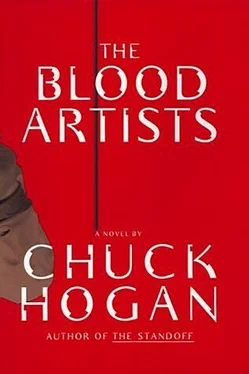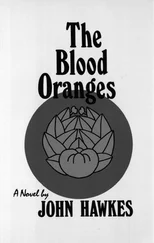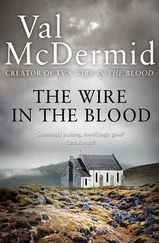“We’ve isolated the green zone,” he said, “and evacuated all nonexposed patients, support staff, personnel.”
“Leaving how many infected?”
The chief resident took a dramatically deep breath. “Sixty-four. Eleven dead already and as many as twenty in the late stages. We would have picked it up sooner, but with the TB patients, it was difficult to tell.”
The hood came down over my head. There were many people moving around me.
“The catatonics, Dr. Pearse.”
They were pulling tape around my ankles, knees, and elbows, sashing the slack suit material. I nodded my hood at the doctor, prompting him to continue.
“Clinical catatonia, nonresponsive to medication. None of them has spoken or moved in at least the past ten years. They were in the room next to the TB ward, undergoing neurological tests. Dr. Pearse — they’re speaking. The infected catatonics. They’re waking up, asking questions.”
The suit hood smelled of plastic inside, with a lingering coolness like that of a Halloween mask. A Velcro tag labeled S. PEARSE was affixed to my breast, beneath the black BDC logo. I thumbs-upped the Biohazard Containment Unit without enthusiasm and looked again to the doctor.
“The virus we suspect here has been known to have a pronounced effect on the brain,” I said. “Now, if you’ll excuse me.”
I walked alone to the nylon-tunneled entrance way, known as “the umbilical,” its pale blue wails rippling in the Carolina breeze. The advance BioCon team had removed the automatic doors to the hospital and installed air locks and negative pressure doorways. I stopped at a steel door papered with safety stickers, checklists, and red warnings, placing my triple-sealed hand upon it. It had been a long time since I’d been inside a suit. I took three deep, filtered breaths, loud inside the hood, then entered.
The second door opened on a hospital corridor and whooshing gusts of air accompanied me inside. The building was sealed under negative pressure so that no microbes could escape to the outside environment; whenever the control doors were opened, air was made to rush inward. The gloomy admitting room and hospital lobby were empty, the talking head on a high monitor still automatically welcoming visitors and issuing paperwork instructions. Hospitals were no longer places where the sick went to be cured. All surgeries, diagnostic tests, and physical examinations were performed at neighborhood-based “parish” clinics under the auspices of the national health care system, at a flat rate surcharge. Federal hospitals had become “managed care facilities,” or sanitariums for long-term care of the chronically and terminally ill.
The walls and ceilings were all coated with a white, meringuelike viricidal foam. Eight colored bands ran along the center of the clean corridor floor. I followed apple green where it veered off from the rest.
Around the first corner, other BDC personnel moved about in yellow suits like astronauts burdened by gravity, backs emblazoned with the cardinal red, three-petaled biohazard symbol. One stepped out and approached me, calling to the others in a muffled voice, “Dr. Pearse is on-site.” A second suit holding a glassine-shielded tablet, the administrator of the situation log, called out the time in response: “Mr. Director on-site, thirteen-oh-two.”
The approaching scientist strode out to meet me, her arms and legs moving naturally inside the baglike suit, the cap lining her forehead and the frame of the Plexiglas shield giving her face a pronounced V shape of dark eyes and slanting cheeks, a sharply tapered chin. The woman’s face was striking, but like a sculpture made of glass, her beauty was cold and fixed. Two thin auburn eyebrows arched smartly into an uncreased forehead. Her name tag read U. FREELEY.
Freeley was Peter Maryk’s number two in Special Pathogens. She joined me and strode confidently at my side, following the green stripe ninety degrees around another corner. “PCR typing confirms the pathogen,” she said. Her voice lowered commensurate with the privileged nature of the information. “It’s a confirmed Plainville drift.”
“We’re absolutely certain?”
“Oligonucleotide mapping will take a day or two, but it’s here, and it’s hot.”
An antigenic “drift” described a slight change in the makeup of a virus. A virus that has “drifted” has undergone a subtle genetic mutation, and can elude previously produced antibodies to successfully reinfect an immunized host. An antigenic “shift” is a wholesale recasting of the virus. Plainville’s frequent shifts were as alarming as they were unexplained.
She said, “It originated with the catatonics.”
That was meant to surprise me, which it did. “Not the TB ward?”
“Catatonics first. Then immediately jumped to the lungers down the hall.”
“No amplification outside the hospital?”
“None yet. Again, a nice, tight environment for containment. We have the hospital logs for all visitors and contact tracing is under way. Quarantine Services should have everyone rounded up within the hour.”
“Good. The hospital is locked down?”
“FEMA Biohazard is settled in. Epidemiology is represented by General Investigation, Identification, Host Factors, Pathogenesis—”
“Fine.” I cut short the roll call. We had arrived at another air lock bolted to the wall and sealed with drying epoxy, the removed door leaning next to it. The tiles beneath our feet were entirely green.
“Trauma,” Freeley said. “We grouped the catatonics here to facilitate treatment.”
I nodded and reached for the door handle. I wanted to pick up the old feeling before proceeding with the investigation.
“Just patients inside,” she said. “Serology can handle the blood sampling.”
“I want to take a look around for myself.”
Freeley stepped back, her eyes narrow and steely, like Peter’s, and humorless. Her deference to me was forced; she either disliked or distrusted me, or both. I attributed it to Maryk’s influence and left her there in the hallway, moving through the portal alone.
The forced air washed me inside the trauma unit. Curtains printed with pharmaceutical advertisements segregated the patient bays, numbered two to twenty-nine around the room. Yellow suits conferred in the central nurses’ station, stocking trays and updating computer charts. One nodded to me as he passed, the laminated pages of a small book held in his rubber-gloved hands; the Velcro tag upon his chest read CHAPLAIN.
The fact that the outbreak had not originated with the hospital staff was in itself remarkable. In epidemiological terms, it was the hound that did not bark. The catatonics’ incapacitated state seemed to be, at that point, our first solid lead in establishing the epidemiology of the Plainville strain: The disease could have been communicated to them only by a visitor. Thus the vital importance of contact tracing.
An attending serologist passed me wheeling an instrument cart. “Director Pearse,” he said, recognizing me, slowing, straightening.
His awed greeting reminded me just how remarkable my presence there was. “I’m here to help,” I said.
He gestured to his cart. He was young and thin inside the tightly sashed suit, wearing black-rimmed glasses. “We’re just pulling blood,” he said.
“Dangerous work,” I reminded him, reading his name tag, “Dr. Tenney.”
“Yessir. Of course.”
“Okay if I accompany you on your rounds?”
“Yessir,” he said brightly, and we started across the room.
I discerned the hazy forms of patients through the plastic tent walls, lying supine or sitting up against pillows, doctors and scientists and nurses in yellow suits at their sides. The bays themselves were each roughly the size of an average parking space, and each contained one bed sealed inside an opaque plastic oxygen tent hanging from the ceiling to the green floor. Tenney led the way to a bed near the door, number twenty-five.
Читать дальше












